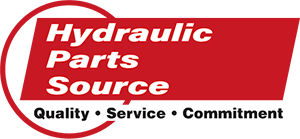5 Things All Hydraulic Suppliers Should Know
Supplying your customers isn’t just selling them parts and products they need. Being a true go-to supplier takes a level of expertise about the field that, when the customer is in need, can be used to accommodate customer questions and concerns.
Price, quality, customer service, and attention to detail are also major components to being a supplier who provides the best hydraulics equipment and experience.
However, when your customer calls you with a need of a different kind – recommending a product for a specific application, or troubleshooting, for instance – having fluid power facts at-the-ready is key.
Facts about the impacts of environmental factors, which we cover in this article, are an example of important knowledge you need to provide the best possible solution for end-users.
When sourcing a piece of hydraulic equipment, there are five things about the environment the machine will operate in that should be known when selecting the most efficient, quality, cost-effective equipment for the job.1. Minimum And Maximum Ambient Temperature
Ambient temperature is the air temperature of any object or environment where equipment is stored. The adjective ambient means “relating to the immediate surroundings.”The range of ambient temperature is necessary information to determine the correct hydraulic fluid type, viscosity grade and viscosity index. This is an important determining factor when supplying compatible parts that meet end-users’ needs.
Machinery comes with suggested fluids and lubricants, and qualified hydraulic specialists will be better able to supply the proper equipment for individual systems when given the range of temperatures that these fluids are designed to accommodate.Excessive heat will cause material to swell and harden, while colder temperatures can result in shrinkage and leakage, and fluids and lubricants are designed to regulate and work efficiently within certain ranges to prevent damage, so knowing the environmental temperature is key.
2. Average Humidity Conditions
Addressing another environmental factor, average humidity, can help an expert hydraulics supplier provide the best equipment for the end-user’s need. Humidity can be one of the more insidious causes of deterioration and addressing it is often a frustrating endeavor of end-users who try to control equipment climate.From low, to high, to fluctuating, humidity conditions will affect equipment. This simply means some solutions may be better than others to meet the needs of the end-users with a humidity problem.
The level of humidity in an environment can change quickly and unexpectedly, but still, knowing the typical conditions and average humidity level of the application’s environment are a useful start for suppliers who need to recommend products and solutions.
3. Airborne Contamination
It is a common scenario for machinery using hydraulic systems to be affected by microscopic solid particles. As we’ve addressed in previous blogs, contaminants are a possible cause of catastrophic component failure.According to industry experts, contamination causes 65% to 90% of all hydraulic system failures. The malfunction may be intermittent, requiring extensive troubleshooting to identify the faulty component. Knowing whether contaminants are an issue is useful information to suppliers, who can steer distributers toward better equipment that can avoid future issues.
4. Altitude
Height above sea level and resulting reduction in atmospheric pressure affects pump inlet conditions - especially if the pump is mounted on top of the tank. For the record, this is never a good idea even at sea level, as it has to “lift” fluid into its inlet.Altitude also reduces the mass of air passing through an air-oil heat exchanger and be accommodated with parts designed to compensate for the reduction. Another useful environmental factor, altitude is an important item for suppliers to understand.
5. Special Conditions
Finally, it’s useful for suppliers to know any issues pertaining to compliance with international, federal, state, local or municipal standards / codes. These can not only be useful, but of critical importance, when providing an informative selection for hydraulics systems.Other conditions to ask the end-user about when either proposing equipment solutions or performing other troubleshooting:
- Is site in a hazardous location?
- Is there presence of an ignition source?
- Is it an environmentally-sensitive location (high pollution spill risk)?
End-Users Become Repeat Buyers from Knowledgeable Hydraulic Suppliers
Make sure your end-users see the value in your experience and continue developing your fluid power knowledge so they perceive you as an established, well-versed supplier who will take their hydraulics needs seriously.Suppliers who have “been around the block” will possess the experience to seek out these factors and provide solutions that address the specific needs and concerns of end-users.
Are you a hydraulic supplier who needs this knowledge, and needs your own reliable supplier for remanufactured parts? Hydraulic Parts Source is a leading fluid power remanufacturer, and we’re ready to serve you.Contact us today to experience OE quality for a fraction of the time and cost by calling (888) 477-7278 or get a quote by emailing sales@hydparts.com.

